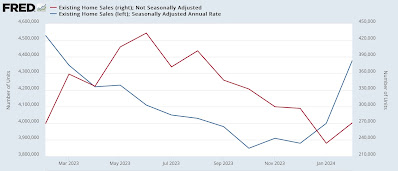FDA Hints J&J Booster Jab May Be Beneficial, But Remains Mum On Approval Odds
FDA Hints J&J Booster Jab May Be Beneficial, But Remains Mum On Approval Odds
With just one day left before the FDA’s vaccine advisory committee meets in person to discuss booster-jab submissions from Moderna and J&J, the FDA has…

With just one day left before the FDA's vaccine advisory committee meets in person to discuss booster-jab submissions from Moderna and J&J, the FDA has just shunned Moderna once again by suggesting that the agency might approve the J&J booster jab, one day after it suggested that Moderna's jab is still "too effective" to justify recommending a third jab.
However, the agency's scientists also lamented the paucity of data submitted by J&J, and questioned the strength of the evidence submitted.
The panel's decision on Friday could have significant influence on whether the 15 million Americans who have received the one-dose vaccine will be allowed to get a second shot, or if they will instead be urged to get a different brand of vaccine for added protection.
Pfizer's jab has already been granted emergency approval for boosters in patients who are elderly or immuno-compromised. However, when it comes to J&J, the data to support a booster remains limited, and the agency hasn't verified all the information yet.
“Although not independently confirmed by FDA from datasets, summaries of the data suggest there may be a benefit in a second dose administered approximately 2 months after the primary dose, when compared to the efficacy seen in the pivotal study COV3001,” they wrote in a 54-page document published on Wednesday.
The main reason why the FDA might consider approving a booster jab for J&J is that data show the J&J jab simply isn't as effective as the Pfizer and Moderna jabs, so those who have received it might be better off receiving a booster dose to keep their immunity levels high.
"The highest effectiveness estimates (including for more severe COVID-19 disease) across clinical trials and real-world effectiveness studies evaluating the Janssen COVID-19 Vaccine are consistently less than the highest effectiveness estimates for the mRNA COVID-19 vaccines," they said.
[...]
"Although not independently confirmed by FDA from datasets, summaries of the data suggest there may be a benefit in a second dose administered approximately 2 months after the primary dose," the agency said in its report.
Overall, the data show that single-shot J&J vaccine "still affords protection against severe COVID-19 disease and death in the United States."
The report by FDA scientists is meant to brief the agency’s Vaccines and Related Biological Products Advisory Committee, which will meet Thursday to discuss he Moderna jab and Friday to discuss data on the safety and effectiveness of a second J&J jab. T
The documents published so far offer a glimpse of the agency’s view on additional shots.
J&J, which uses a modified adenovirus to elicit an immune response, asked the FDA to approve a booster shot of its one-dose vaccine for people ages 18 and older on Oct. 5.
The briefing documents appear to suggest that the FDA is leaning toward authorizing a J&J booster jab, while the agency's advisory panel appears to be leaning toward rejecting a Moderna booster, at least for now, because - as we said - their data suggests the Moderna jab retains immunity for longer.
Read the FDA's full J&J briefing documents below:
VRBPAC 2021.10.14 15 Meeting Briefing Document FDA (Janssen) by Joseph Adinolfi Jr. on Scribd
Government
TikTok’s duet, green screen and stitch turn political point-scoring into an art form
TikTok’s features for combining different users’ videos have sparked a wave of creativity. They’ve also formed an arena for political arguments and…

Since its astronomical rise in popularity during the 2020 COVID-19 lockdowns, TikTok has played an increasing role in all aspects of American life, including politics, from the White House briefing key TikTok creators on the war in Ukraine to Joe Biden’s presidential campaign launching a TikTok account.
The U.S. House of Representatives passed legislation on March 13, 2024, seeking to force TikTok’s China-based parent company to sell the app or face a ban in the U.S. Even if this legislation passes the Senate and Biden signs it into law, it’s unlikely TikTok will go away before the 2024 U.S. presidential election. Any law banning TikTok is likely to be challenged in court, and the app won’t simply disappear from people’s phones overnight.
Given that TikTok is almost certain to play a role in the 2024 election, it’s important to examine how TikTok helps shape political expression and discussion. With communications scholar Mackenzie Quick, I recently published a journal article exploring how American TikTok users use the app’s stitch, duet and green screen features to stoke partisan conflict.
Getting together
TikTok says its mission is to “inspire creativity and bring joy.” In 2019, it introduced several features to help bolster that mission: duet, green screen and stitch. Duet allows you to post your video side by side with a video from another TikTok user. Green screen allows you to superimpose your video on a video from another TikTok user. Stitch allows you to append your video to the end of a short clip from a video from another TikTok user.
TikTok describes these features as giving users “the most creative tools available” and providing a way for users “to engage with the world of content that’s made … by the ever-creative TikTok community.” Given these descriptions, it appears that these tools were designed to increase creativity, interaction and connections.
They can be used in playful ways or used by subject matter experts to convey information. For example, some veterinarians use TikTok to convey pet health information.
However, a platform’s statements about how it intends its features to be used and how people actually use them can be quite different. While these features are often used in TikTok’s preferred ways, our research found that in political tiktoks, people often used the tools to double down on their political positions and attack those who don’t agree with them. In a time of volatile political divisiveness, these features can function as outlets for people to express their strongly held political views.

Scoring points
Reinforcement and insults were recurring themes in our study. For instance, the green screen feature was often used to incorporate “evidence” in the background to support the creator’s claims. With this feature, “evidence” was often presented in the form of news articles or posts from other social media platforms.
One post from a conservative-leaning creator features a screenshot of the Apple iTunes music store charts to show the popularity of a song called “Let’s Go Brandon,” a conservative rallying cry and coded insult against Biden. This creator presents the song’s position at No. 1 in the music store as proof that the conservative viewpoint is popular. “Evidence” is a loose term and could be anything that supported the creator’s viewpoint.
We found the duet feature was often used to communicate nonverbally, often to poke fun at someone with opposing political views. Eye rolling, smirking and head shaking were common gestures. In one video, a conservative creator starts a chain – an extended succession of duets – of women who support former President Donald Trump. A liberal-leaning creator uses the duet feature to join the chain with video of themselves holding a clothes iron out to the side to make it appear as though the iron is burning the original creator’s hand.

Stitches functioned similarly to duets, but people tended to use the feature as a chance to verbally respond and refute the previous creator’s point. These uses show that on political TikTok, personal feelings and proving others wrong matter more than constructive debate.
The who and why of political TikTok
While regulation of the app is a political issue, understanding how political conversations occur across TikTok remains important for understanding an increasingly polarized American electorate. When considering political discussions on TikTok, however, it’s important to remember that the app’s features don’t force users to do anything. Users actively shape their experiences in digital spaces.
Also, as political communication scholars Daniel Kreiss and Shannon McGregor note, it’s important to proceed with caution when discussing the effects of technology on polarization because not all groups experience polarization the same way. For instance, the Black Lives Matter movement may be seen as polarizing for disrupting existing power structures, but its goal is to fight for equality, and it’s important to consider that context when looking at the group’s use of technology.
The lesson is to consider who is engaging in polarizing content and why they are doing so. While some users expressing themselves via these TikTok features aim to simply prove others wrong, akin to petty arguments, others may be critiquing and challenging the powerful.
Jessica Maddox does not work for, consult, own shares in or receive funding from any company or organization that would benefit from this article, and has disclosed no relevant affiliations beyond their academic appointment.
white house senate house of representatives trump covid-19 ukraine chinaUncategorized
Signs of a thaw in the frozen existing homes market, but a very long way to go
– by New Deal democratThere’s no big economic news today, but yesterday existing home sales were released. While they have historically constituted…

- by New Deal democrat
There’s no big economic news today, but yesterday existing home sales were released. While they have historically constituted up to 90% of the entire market, they have much less economic impact than new home sales, which involve all sorts of construction activity, followed by landscaping, furnishings, and other sales.
International
Global Population Set To Fall For First Time In 700 Years
Global Population Set To Fall For First Time In 700 Years
Authored by Steve Watson via Modernity.news,
A major study published in scientific…

Authored by Steve Watson via Modernity.news,
A major study published in scientific journal The Lancet has found that the global population will start to fall within decades due to vastly reduced fertility rates and may never recover.
The study, funded by the Bill & Melinda Gates Foundation, found that by the year 2050, 155 of 204 countries are on course to have birth rates lower than required to sustain the population level.
It notes that as of 2021, the “total fertility rate” worldwide was 2.23, hovering only just above the 2.1 children per woman needed to maintain population growth.
That figure has fallen from 4.84 in 1950, with researchers predicting it will decrease to 1.83 in 2050 and go as low as 1.59 by 2100.
Dramatic declines in global fertility rates set to transform global population patterns by 2100, new GBD Capstone study suggests.
— The Lancet (@TheLancet) March 20, 2024
Explore the data ➡️ https://t.co/Mvc1PyR4F4 pic.twitter.com/xdpSjVLrQJ
The study notes that by that time only 26 countries will have birth rates that outpace the number of people dying, with “most of the world transitioning into natural population decline”.
A fall in population would mark the first time in seven centuries such an occurrence has taken place.
The last time it happened was after the Black Death bubonic plague pandemic killed as many as 50 million people in the mid-1300s, reducing the global population from 400 million to 350 million.
Commenting on the study, it’s co-author Dr Natalia Bhattacharjee said declining fertility rates “will completely reconfigure the global economy and the international balance of power and will necessitate reorganising societies”.
Bhattacharjee, lead research scientist at the Institute for Health Metrics and Evaluation (IHME) at the University of Washington, also noted that a major consequence will be increased immigration from countries where there is still a “baby boom,” such as sub-Saharan Africa, in order to make up workforce shortages in nations with aging populations.
Professor Stein Emil Vollset, senior author from IHME, also noted that the world is “facing staggering social change through the 21st century” due to population decline.
The findings are exactly what the likes of Elon Musk have been warning of for years, describing population decline as a ‘civilisational threat’ and urging that humanity is literally going to disappear if something is not done to reverse the trend.
While Eco loons rage about ‘moral issues’ with having children, the potential causes of fertility decline, such as plastics and chemical shrinking penises and sperm counts, are relatively ignored.
The stark reality is that birth rates globally are collapsing and almost every country is on course to have shrinking populations by the end of the century.
In countries like South Korea and Japan, there are twice as many people are dying as there are being born. You don’t have to be a mathematic genius to do the calculations on what’s going to happen very soon.
These countries are already considering embracing mass migration, with South Korea’s Justice Minister recently declaring the country faces a “demographic catastrophe” and potential extinction otherwise.
Fertility rates globally are collapsing and almost every country is on course to have shrinking populations by the end of the century. This is why @elonmusk and others are sounding the alarm. Report here: https://t.co/I3vfVi3M3Q pic.twitter.com/0enKUksxk2
— m o d e r n i t y (@ModernityNews) January 30, 2024
Despite this horrifying reality, it is now commonplace in modern culture for young people to genuinely believe they need to abandon their human instincts to reproduce, all for the greater good:
* * *
Your support is crucial in helping us defeat mass censorship. Please consider donating via Locals or check out our unique merch. Follow us on X @ModernityNews.
-

 Spread & Containment1 week ago
Spread & Containment1 week agoIFM’s Hat Trick and Reflections On Option-To-Buy M&A
-

 Uncategorized4 weeks ago
Uncategorized4 weeks agoAll Of The Elements Are In Place For An Economic Crisis Of Staggering Proportions
-

 International2 weeks ago
International2 weeks agoEyePoint poaches medical chief from Apellis; Sandoz CFO, longtime BioNTech exec to retire
-

 Uncategorized1 month ago
Uncategorized1 month agoCalifornia Counties Could Be Forced To Pay $300 Million To Cover COVID-Era Program
-

 Uncategorized4 weeks ago
Uncategorized4 weeks agoApparel Retailer Express Moving Toward Bankruptcy
-

 International2 weeks ago
International2 weeks agoWalmart launches clever answer to Target’s new membership program
-

 Uncategorized1 month ago
Uncategorized1 month agoRFK Jr: The Wuhan Cover-Up & The Rise Of The Biowarfare-Industrial Complex
-

 Uncategorized1 month ago
Uncategorized1 month agoGOP Efforts To Shore Up Election Security In Swing States Face Challenges
























